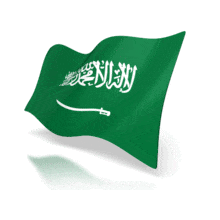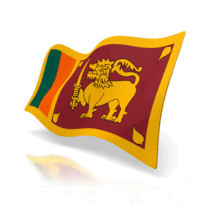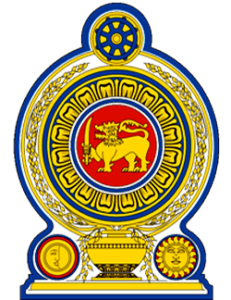Basic Data
| Conventional long form | Democratic Socialist Republic of Sri Lanka |
| Conventional short form | Sri Lanka |
| Former | Ceylon |
| Area | 65,610 sq km |
| Length | 445 km |
| Breadth | 225 km |
| Capital | Sri Jayewardenepura |
| Commercial Capital | Colombo |
| Government | Sri Lanka, is a free, independent and sovereign nation with a population of 20.3 million (2011 est). Legislative power is exercised by a Parliament, elected by universal franchise on proportional representation basis. A President, who is also elected by the people, exercises executive power including defense. Sri Lanka enjoys a multi party system, and the people vote to elect a new government every six years. |
| Population | 20.3 million |
| Population Density | 296 people per sq km |
| Life Expectancy at Birth | 76.4 female, 71.7 male (2001 est) |
| Literacy Rate | 92.7%(2003 est) |
| Languages | Sinhala & Tamil is widely spoken throughout Sri Lanka. |
| Ethnic Mix | Sihalese – 74.9%; Tamil – 15.4%; Muslim – 9.2%; Burgher (descendants of Dutch and Portuguese colonist) and others 0.5% (2012 est) |
| Religion | Buddhism 70.19%; Hinduism 12.61%; Christianity 7.45%; Islam 9.71% |
| Climate | Low lands – tropical, average 27°C Central Hills – cooler, with temperatures dropping to 14°C. The south-west monsoon brings rain to the western, southern and central regions from May to July., while the north-eastern monsoon occurs in the north and east in December and January. Sri Lanka boasts of a good climate for holiday-makers throughout the year. |
| Annual per capital GNP | US $2580 (2011 est) |
| Industries | Processing of rubber, tea, coconuts, and other agricultural commodities; clothing, cement, petroleum refining, textiles, tobacco. |
| Agriculture – Products | Rice, sugarcane, grains, pulses, oilseed, roots, spices, tea, rubber, coconuts; milk, eggs, hides, meat. |
| Currency | Sri Lanka follows decimal currency systilable in the denominations of Rs. 2,10,20,50,100,200, 500,1000,2000, and 5000 in Rupees (Rs.) and cents (Cts.) with 100 cents equal to a rupee. Currency notes are avaCoins are issued in values of Cts.1,2,5,10, 25 and 50 and Rs.1,2,5 and 10. The intervention currency continuously will be the US Dollar. |
| Visa | You may obtain visa within 10 minutes time if you visited the Consulate General of Sri Lanka in Jeddah |
| Working Week | Sri Lanka works a five-day week, from Monday to Friday. |
| Business Hours | Government offices 8.35 a.m. – 4.15 p.m,, Monday to Friday |
| Banks | 9.00 a.m. to 1.00 p.m. or 3.00 p.m. Monday to Saturday |
| Post Office | 8.30 a.m.- 5.00 p.m., Monday to Friday 8.30 a.m. – 1.00 p.m. on Saturday. The Central Mail Exchange, at D.R.Wijewardene Mawatha, Colombo 10, (Telephone : 326203) is open 24-hours. |
| Location | An island off the south-eastern cost shores of India, 880 km north of the equator, in the Indian Ocean. It lies between 5° 55′ and 9° 55′ north of the equator and between the eastern longitudes 79° 42′ and 81° 52′. |
| Feature | Encompassed beautiful tropical beaches, verdant vegetation, ancient monuments and a thousand delights to please all tastes. The relief features of the island consist of a mountainous mass somewhat south of the centre, with height exceeding 2,500 metres, surrounded by broad plains. Palm fringed beaches surround the island and the sea temperature rarely falls below 27°C. |
National symbols of Sri Lanka
Sri Lanka National Anthem
After independence was granted to Sri Lanka in 1948, the need for a national anthem arose. As a result of a contest, Ananda Samarkone’s contribution, written in Sinhalese, was chosen as the new anthem. The Tamil lyrics have the same meaning as the Sinhalese lyrics. It was first performed on the fourth anniversary of independence in early 1952.
| Sinhala Lyrics of National Anthem |
Sri Lanka Matha, apa Sri Lanka,
Namo Namo Namo Namo Matha.
Sundara siri barini,
Surändi athi Sobamana Lanka
Dhanya dhanaya neka mal pala thuru piri, jaya bhoomiya ramya.
Apa hata säpa siri setha sadana, jee vanaye Matha!
Piliganu mana apa bhakti pooja,
Namo Namo Matha.
Apa Sri Lanka,
Namo Namo Namo Namo Matha,
apa Sri Lanka, Namo Namo Namo Namo Matha.
Obave apa vidya obamaya apa sathya obave apa shakti
apa hada thula bhakti oba apa aloke
apage anuprane oba apa jeevana ve
apa muktiya obave
Nava jeevana demine nithina apa
Pubudu karan matha
Gnana veerya vadavamina ragena yanu
mana jaya bhoomi kara
Eka mavekuge daru kala bavina
yamu yamu wee nopama
Prema vadamu sama bheda durara da Namo Namo Matha
Sri Lanka National Flag
The National Flag of Sri Lanka represents the country and her heritage as rallying device that integrates the minorities with the majority race.
Sri Lanka National Flag is an improvisation of the civil standard of the last king of Sri Lanka, Sri Wickrama Rajasingha.
The civil standard had a passant royal lion with a sword in it’s right fore paw at the center, and a bo-leaf on each of the four corners on a plain border.
When Sri Lanka gained her independence from Great Britain on February 04, 1948, it was the lion flag of the last king of Sri Lanka was hoisted once again.
The first Prime Minister of independent Sri Lanka, D.S.Senanayake, appointed a committee to advice the government on the design of a new national flag. The design approved by the committee in February 1950 retained the symbol of the lion with the sword and the bo-leaves from the civil standard of the last king of Sri Lanka, with the inclusion of two vertical stripes green and orange in color.
The significance of each symbol of the national flag is as follows:
- The lion in the flag represents the Sinhala race.
- The sword of the lion represents the sovereignty of the country.
- Curly hair on the lion’s head indicates religious observance, wisdom and meditation.
- The beard denotes purity of words.
- The handle of the sword highlights the elements of water, fire, air and earth.
- The nose indicates intelligence.
- The two front paws purport to purity in handling wealth.
- The vertical stripe of orange represent the minority Tamil race and the green vertical stripe the minority Muslim race.
- The four virtues of kindness: KINDNESS, FRIENDLINESS, HAPPINESS, EQUANIMITY are also represented in the flag.
- The border round the flag, which is yellow in color, represents other minor races.
- The bo-leaves at the four corners of the flag represent Buddhism and it’s influence on the nation. They also stand for the four virtues – Kindness, Friendliness, Happiness and Equanimity.
- The maroon colored portion of the flag manifests the other minor religions.
The national flag was hoisted for the first time on March 3, 1950.
Sri Lanka National Tree
The Ironwood (Na Tree), botanically known as ”Mesua Nagassarium” was declared the National Tree on 26th February 1986.
It was chosen as the National Tree for several reasons.
- It is a tree which originated in Sri Lanka
- Its utility
- Historic and cultural importance
- Exterior posture
- Wide distribution
- Colour and nature
- Ability to draw and sketch it easily
This rain forest tree grows to about 30 m high and indigenous to the lower wet Zone of Sri Lanka. Remarkable Features of NA is beautiful bright Red Leaves and finally matured in to a deep green. Timber has a very hardness and durability and used to make bridges in the early times. Now it is not allowed to use for timber due to its religious value. The flower of NA is also used in herbal medicine and preparation of perfumes, cosmetics and soaps.
It is believed that the first visit of Buddha was to grove of a NA Tree at Miyanganaya and also the next Buddha (Mithriya) will attain enlightenment under a NA tree.
Sri Lanka National Flower
The “Nil Mahanel” flower, botanically known as “Nympheae Stellata” was declared the National Flower of Sri Lanka on 26th February 1986.
Sri Lanka National Bird
Sri Lanka Jungle Fowl – Very colorful ground bird, endemic to Sri Lanka is the national bird of Sri Lanka. Distributed commonly in Sri Lanka’s jungle and dense scrub through out. Roosts high in trees at nights. Flies up to tree branches when threatened. Nests in hidden, scraped place on the ground or on a pile of vegetation just off the ground. Sinharaja is a very good site to watch Sri Lanka Jungle Fowl.
Source:


